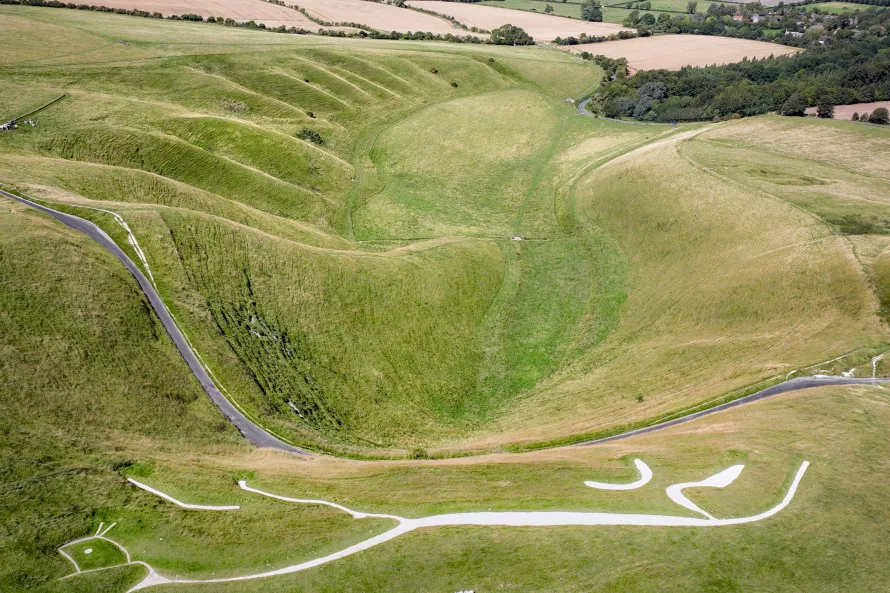The creators of the White Horse deliberately chose the most dramatic landscape setting in the region – the north-facing scarp of the chalk downland, which gives soaring views of the Thames Valley, the Chiltern Hills and Cotswolds beyond.
The chalk downland was for 60 million years a seabed, into which there was a continuous drizzle of shells as countless sea creatures died. As the waters retreated the chalk bed formed a dome, which spread from northern France to southern England. Where the English Channel cut though the chalk we can now see the gleaming white cliffs. This was Albion to the Romans – the white land.
Earth is the only known planet in the universe to be constantly activated by the movement of tectonic plates. As the plate of Africa pushes northwards, at about the rate of a fingernail growing, it has pushed up the rocks of the Alps and in England shunted the chalk to create a succession of scarps.
More recently, about 12,000 years ago, after the end of the Ice Age, melting permafrost and massive mudflows etched the flank of the chalk. This created the huge scoop below the White Horse, now known as the Manger, and the spectacular folds in its sides known as the Giant’s Staircase.
To one side Dragon Hill, an isolated pyramid of chalk. This is a natural feature, though probably modified by human activity to give it a flattened top and much quarried around the lower edges.
Chalk is extremely porous so water trickles through it, all the way down to impermeable layers at the base, where it creates a spring-line. This is why Romano-British villas, medieval villages and manor houses are found at the foot of the chalk scarp, where fresh spring water emerges.
At the mouth of the Manger, just beyond the modern B4507 Wantage to Ashbury road, water gushes out – the principal source of the River Ock. The Ock, whose Celtic name refers to a type of fish, runs through Uffington, past the Roman religious complex at Frilford and joins the Thames at Abingdon, the site of an important prehistoric centre, a Roman town and rich medieval abbey.
It is this spectacular setting, a theatre designed by nature, which united the underworld, the earth and the heavens, that attracted prehistoric people to inscribe their mythologies on the land.

